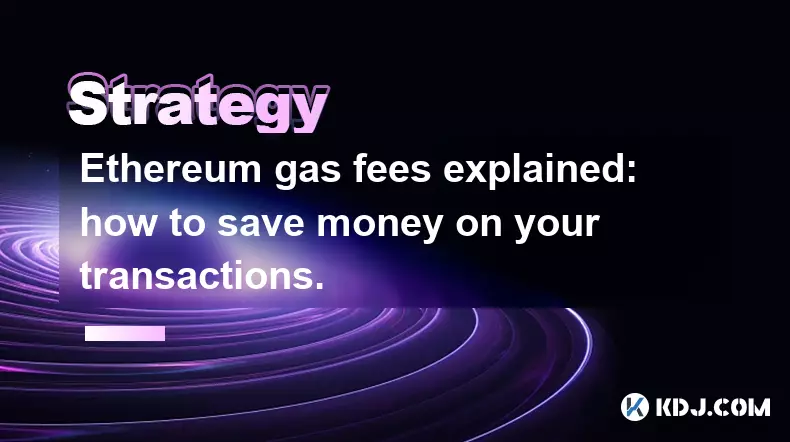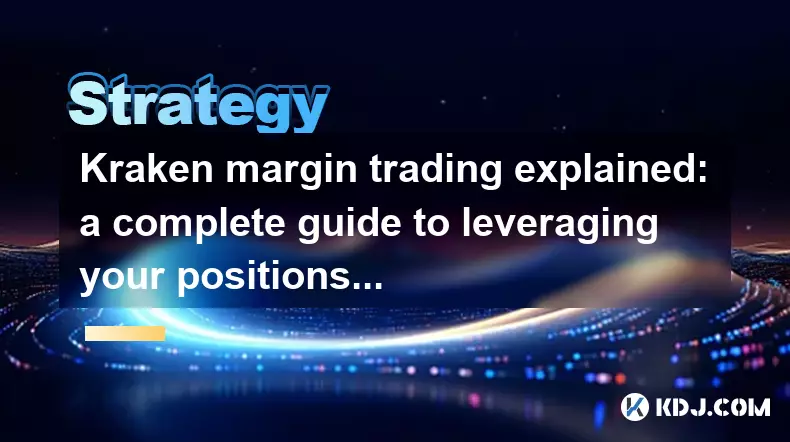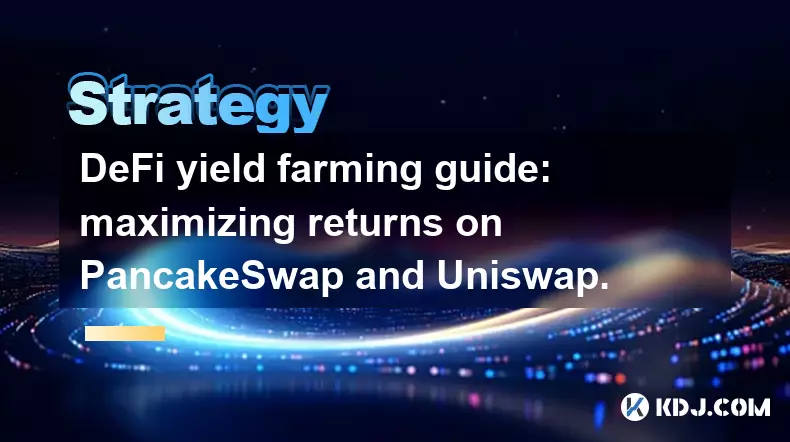-
 bitcoin
bitcoin $102182.982207 USD
-0.92% -
 ethereum
ethereum $3438.744518 USD
0.12% -
 tether
tether $0.999933 USD
0.02% -
 xrp
xrp $2.405093 USD
0.05% -
 bnb
bnb $956.306114 USD
-0.53% -
 solana
solana $153.028851 USD
-1.23% -
 usd-coin
usd-coin $0.999800 USD
-0.03% -
 tron
tron $0.294898 USD
-1.08% -
 dogecoin
dogecoin $0.171428 USD
-0.58% -
 cardano
cardano $0.551186 USD
-1.15% -
 hyperliquid
hyperliquid $38.755878 USD
0.04% -
 chainlink
chainlink $15.298460 USD
-0.05% -
 bitcoin-cash
bitcoin-cash $516.067428 USD
1.68% -
 stellar
stellar $0.280726 USD
-0.42% -
 zcash
zcash $518.919369 USD
18.01%
How to Avoid Liquidation: Essential Tips for Leveraged Traders
Liquidation occurs when your margin falls below maintenance levels, triggering automatic position closure to cover borrowed funds—common in volatile crypto markets.
Sep 06, 2025 at 05:18 pm

Understanding Liquidation in Leveraged Trading
1. Liquidation occurs when a trader’s margin balance falls below the required maintenance level, leading to the automatic closure of their leveraged position by the exchange. This mechanism protects the platform from negative equity and ensures borrowed funds are repaid. In the volatile environment of cryptocurrency markets, price swings can trigger liquidations rapidly, especially with high leverage ratios.
2. Most margin trading platforms use a liquidation price threshold that depends on the initial margin, leverage used, and current market price. When the mark price of an asset reaches this threshold, the system closes the position. Traders often underestimate how close their liquidation price can be during high volatility, particularly in low-liquidity altcoin markets.
3. The risk of liquidation increases exponentially with higher leverage. A 10x leverage position can withstand a 10% adverse move, while a 100x position may be liquidated by a mere 1% shift. Many inexperienced traders are drawn to high leverage for amplified gains but fail to account for the narrow buffer against losses.
4. Funding rates in perpetual contracts can also contribute to liquidation risk over time. While not directly causing liquidation, continuous negative funding payments erode margin balance, reducing the buffer against price movements. Traders holding long positions during periods of high funding rates may see their equity decline even if the price remains flat.
5. Monitoring your position’s liquidation price in real-time is one of the most effective ways to avoid forced closures. Most trading interfaces display this value prominently, allowing traders to adjust or exit before reaching critical levels.
Strategies to Minimize Liquidation Risk
1. Using lower leverage is a fundamental strategy to increase survival in volatile markets. Even experienced traders often limit themselves to 5x or 10x leverage to maintain a wide liquidation buffer. Reducing leverage doesn’t eliminate risk but provides breathing room during sudden price swings.
2. Setting stop-loss orders at strategic levels helps protect capital by closing positions before reaching the liquidation point. While stop-losses don’t guarantee execution during flash crashes or slippage events, they significantly reduce the chance of full liquidation. Traders should place stop-losses based on technical levels, not arbitrary percentages.
3. Regularly topping up margin balance, also known as adding margin, can prevent liquidation during drawdowns. This proactive approach allows traders to extend their position lifespan without relying solely on price reversals.
4. Diversifying across uncorrelated assets reduces systemic risk. If all leveraged positions are in highly correlated coins like Bitcoin and Ethereum, a broad market drop can trigger multiple liquidations simultaneously. Spreading exposure across different sectors or market caps can mitigate this risk.
5. Avoiding overtrading is essential. Opening too many leveraged positions stretches available capital thin and increases the likelihood of margin calls. Focused, well-researched trades with clear risk parameters are more sustainable than numerous speculative bets.
The Role of Market Conditions and Timing
1. Trading during low-liquidity periods, such as weekends or holidays, increases slippage and volatility risks. These conditions can cause rapid price movements that trigger liquidations even without major news events. Traders should adjust position sizes or avoid leveraged trades during such times.
2. Major economic announcements, exchange outages, or whale movements can cause cascading liquidations across the market. These events often lead to “liquidation avalanches,” where large clusters of stop-losses and margin calls amplify price moves. Being aware of upcoming macro events helps traders prepare or reduce exposure.
3. Using limit orders instead of market orders for entry and exit reduces the risk of unfavorable fills during volatile periods. This control over execution price helps maintain predictable margin usage and avoids unexpected gaps that edge closer to liquidation.
4. Monitoring open interest and liquidation heatmaps on trading platforms provides insight into where large clusters of leveraged positions exist. Areas with high short or long concentrations are more prone to sharp reversals when those positions get liquidated en masse.
5. Time-based position management matters. Holding leveraged positions over extended periods increases exposure to unpredictable events. Short-term, tactical trades with defined exit plans tend to fare better than indefinite holds based on sentiment.
Frequently Asked Questions
What is the difference between maintenance margin and initial margin?Initial margin is the amount required to open a leveraged position, typically expressed as a percentage of the total position size. Maintenance margin is the minimum equity that must be maintained in the account to keep the position open. If equity drops below this level, liquidation is triggered.
Can I get liquidated even if the market moves in my favor temporarily?Yes. If your position experiences a deep drawdown that hits the liquidation price—even if the market quickly recovers—the system will have already closed the position. This often happens during volatility spikes or flash crashes.
Do all exchanges liquidate positions the same way?No. Different platforms use varying methods, such as auction-based liquidation, insurance funds, or partial closures. Some exchanges absorb losses via insurance pools, while others fully auto-deleverage counterparties. Understanding your exchange’s liquidation model is crucial.
Is it possible to trade with leverage without risking liquidation?Not entirely. Any use of borrowed funds carries liquidation risk. However, using very low leverage, maintaining excess margin, and employing tight risk controls can reduce the probability to near-zero under normal market conditions.
Disclaimer:info@kdj.com
The information provided is not trading advice. kdj.com does not assume any responsibility for any investments made based on the information provided in this article. Cryptocurrencies are highly volatile and it is highly recommended that you invest with caution after thorough research!
If you believe that the content used on this website infringes your copyright, please contact us immediately (info@kdj.com) and we will delete it promptly.
- Ripple, XRP, Warning: Navigating the Deepfake Crypto Scam Landscape
- 2025-11-13 08:50:01
- The US Mint, Pennies, and Circulation: End of an Era?
- 2025-11-13 08:45:01
- Penny's End: Production Halt Sparks Cost-Saving Debate
- 2025-11-13 10:40:01
- Bitcoin, Wall Street, and the Great Reset: What's Really Going On?
- 2025-11-13 10:55:01
- US Mint Penny Retirement: A New Era for American Coinage
- 2025-11-13 08:50:01
- Penny Wise, Production Foolish? US Mint Halts Penny Production for Cost Savings
- 2025-11-13 09:10:01
Related knowledge

Navigating a crypto bear market: strategies for survival and profit.
Nov 05,2025 at 02:04pm
Navigating a Crypto Bear Market: Strategies for Survival and Profit Surviving a crypto bear market requires more than just patience—it demands strateg...

Ethereum gas fees explained: how to save money on your transactions.
Nov 04,2025 at 04:01pm
Ethereum Gas Fees: Understanding the Basics1. Ethereum operates on a decentralized network where every transaction requires computational power to exe...

Kraken margin trading explained: a complete guide to leveraging your positions.
Nov 04,2025 at 02:19pm
Kraken Margin Trading Overview1. Kraken is one of the most established cryptocurrency exchanges offering margin trading to experienced traders seeking...

NFT flipping for beginners: a step-by-step guide to profitable trading.
Nov 02,2025 at 11:54pm
NFT Flipping Basics: Understanding the Market1. NFT flipping involves purchasing non-fungible tokens at a lower price and reselling them for profit, o...

DeFi yield farming guide: maximizing returns on PancakeSwap and Uniswap.
Nov 05,2025 at 12:20am
Understanding Yield Farming on PancakeSwap and Uniswap1. Yield farming has become a central activity in the decentralized finance (DeFi) space, allowi...

How to find the next 100x altcoin: a fundamental analysis checklist.
Nov 02,2025 at 09:54pm
Decentralized Exchanges Are Reshaping Trading Dynamics1. Decentralized exchanges (DEXs) have emerged as a powerful alternative to centralized platform...

Navigating a crypto bear market: strategies for survival and profit.
Nov 05,2025 at 02:04pm
Navigating a Crypto Bear Market: Strategies for Survival and Profit Surviving a crypto bear market requires more than just patience—it demands strateg...

Ethereum gas fees explained: how to save money on your transactions.
Nov 04,2025 at 04:01pm
Ethereum Gas Fees: Understanding the Basics1. Ethereum operates on a decentralized network where every transaction requires computational power to exe...

Kraken margin trading explained: a complete guide to leveraging your positions.
Nov 04,2025 at 02:19pm
Kraken Margin Trading Overview1. Kraken is one of the most established cryptocurrency exchanges offering margin trading to experienced traders seeking...

NFT flipping for beginners: a step-by-step guide to profitable trading.
Nov 02,2025 at 11:54pm
NFT Flipping Basics: Understanding the Market1. NFT flipping involves purchasing non-fungible tokens at a lower price and reselling them for profit, o...

DeFi yield farming guide: maximizing returns on PancakeSwap and Uniswap.
Nov 05,2025 at 12:20am
Understanding Yield Farming on PancakeSwap and Uniswap1. Yield farming has become a central activity in the decentralized finance (DeFi) space, allowi...

How to find the next 100x altcoin: a fundamental analysis checklist.
Nov 02,2025 at 09:54pm
Decentralized Exchanges Are Reshaping Trading Dynamics1. Decentralized exchanges (DEXs) have emerged as a powerful alternative to centralized platform...
See all articles










































































